Ischnoderma resinosum, the underused polypore mushroom with a certain beefy quality has lots of trim that could go into a great stock. It's one of the best Ischnoderma recipes I know that captures the unique flavor of this mushroom.
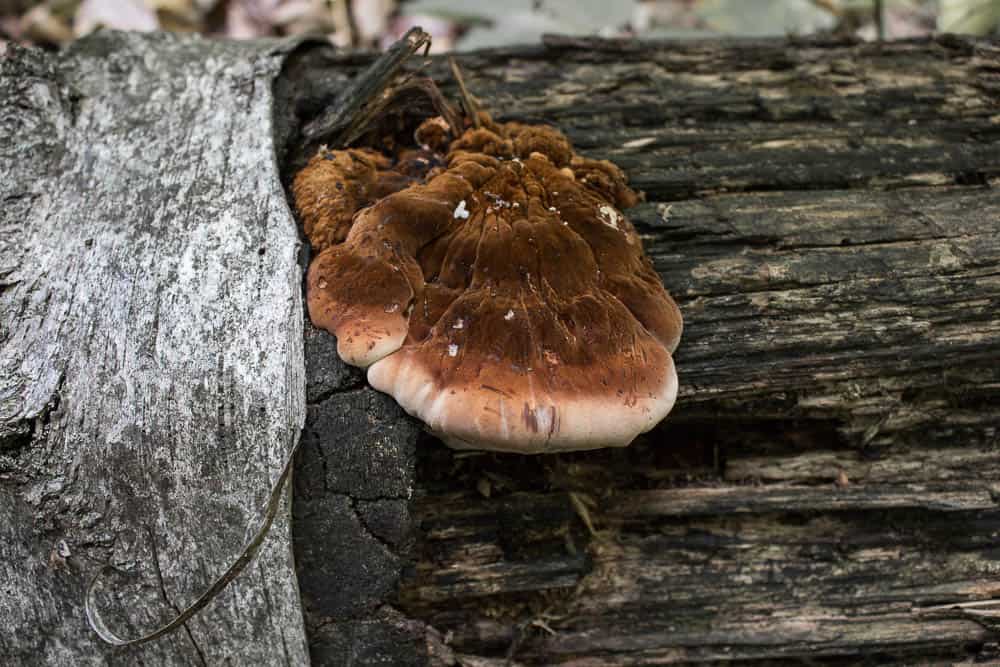
A while back one of my friends from the local mycological society mentioned making broth from them, which sounded like a great way to use all their trim. I made sure to keep my eyes peeled for some the next time I was out hunting.
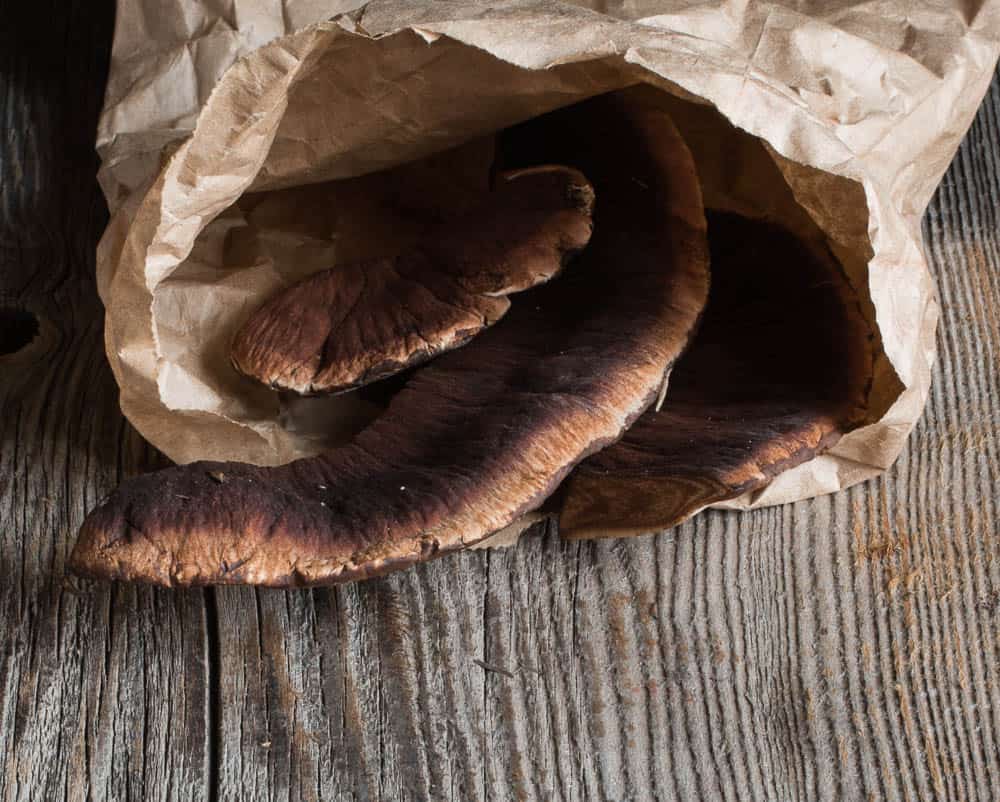
A week or so later I grabbed a couple of tender pieces at the farm and tried out making some stock when I got into work. I took a bunch of carrots, onion, celery and a couple cloves of garlic, ground them up, cooked them down, added the mushrooms and a bouquet of herbs and let it simmer away.
After a few hours I gave it a taste, then angrily poured the liquid into the drain and tossed the mushrooms and vegetables into the garbage. All I could taste was carrots, onions, and celery. I had made vegetable broth flavored with mushrooms in it, where I was trying to make mushroom broth flavored with vegetables.
Most mushrooms have delicate flavors, only a few can over power other things. Some are truly strong, the first that pops into my head being imported Italian porcini, which really beat you over the head compared to boletes I pick and dry locally here in MN.
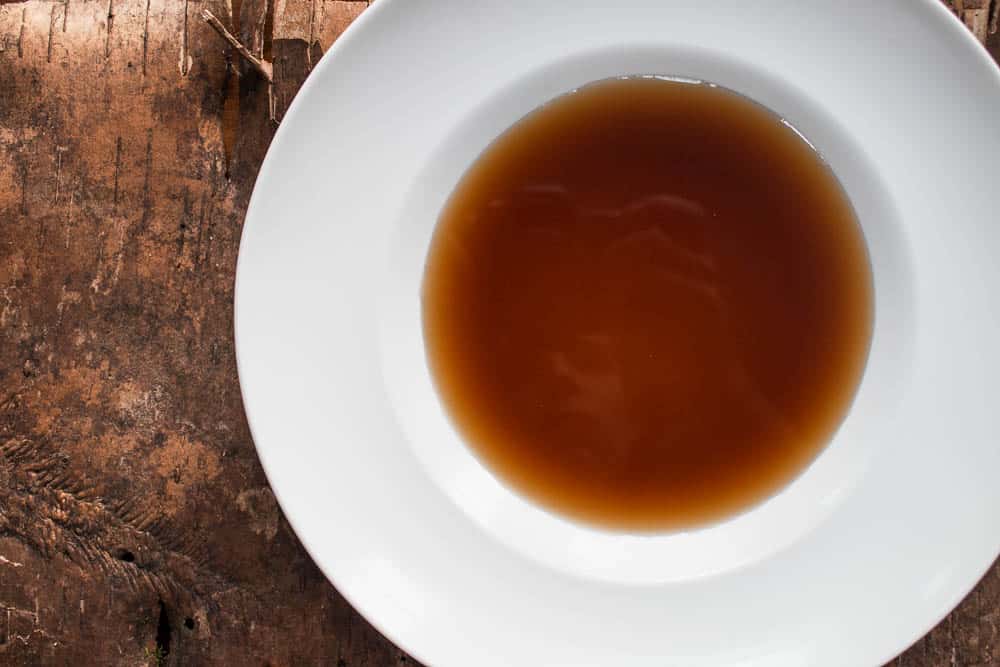
Angry at myself for wasting my haul, I kept my eyes peeled and a couple weeks later I got a few more slices of young growth. This time I kept it super simple: mostly mushroom, with a little fresh thyme, bay, and a few slices of onion and carrot.
After a gentle simmer I had what I was looking for, a good tasting mushroom broth that tasted like mushrooms, with some gentle aromatics in the background.
The same goes for making this and serving this, don't try to put too many things with it or you won't taste the mushroomy-ness of the stock, some broken pasta or cooked grains, cooked mirepoix or some other mild vegetables are all you need for a nice soup, or with a little less broth on the plate, the base of a roasted chicken or vegetarian entree.
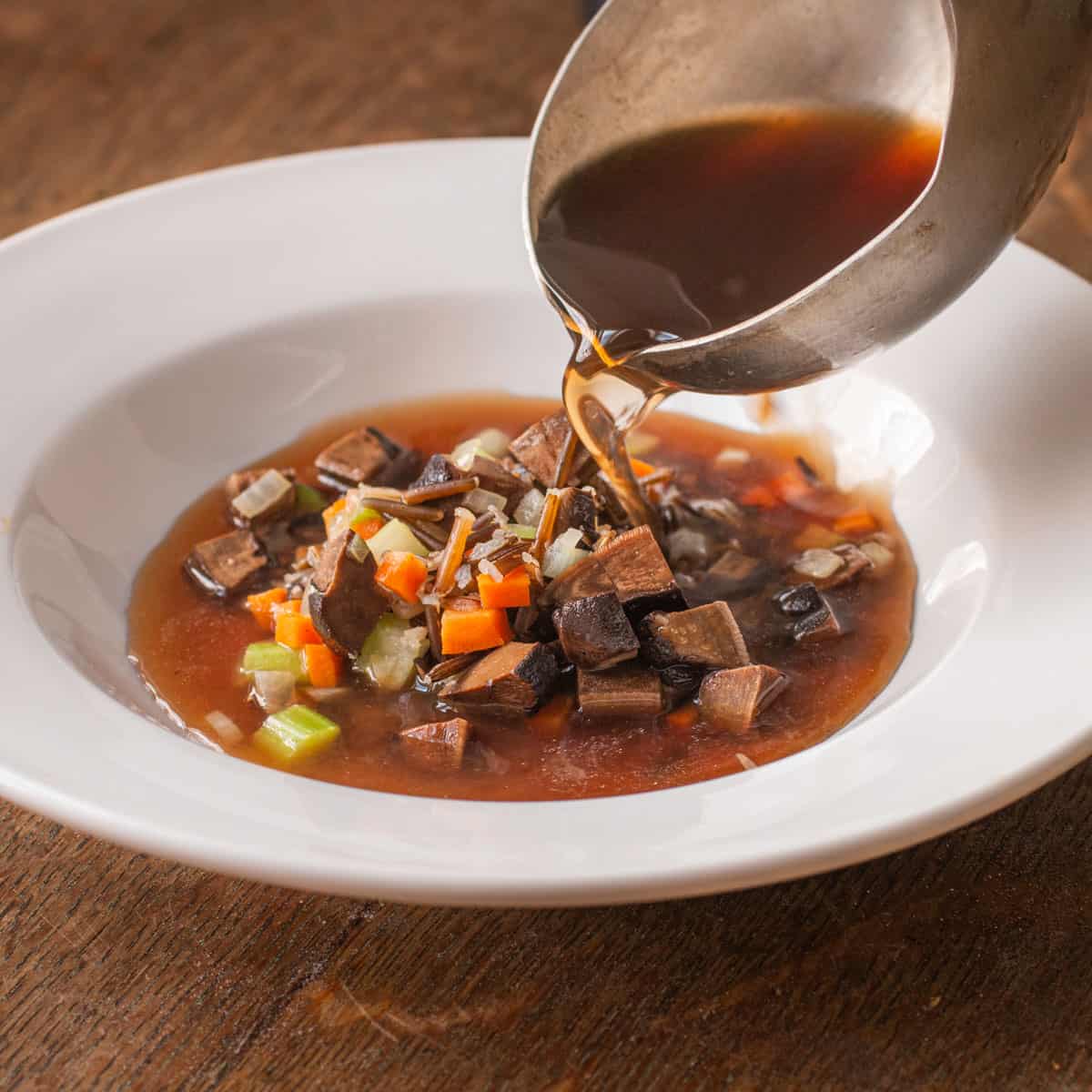
More Great Recipes for Ischnoderma
Oyster Mushroom Soup with Soba Noodles
Wild Chicken Mushroom Thai Red Curry
Ischnoderma Resinosum Broth
Equipment
- 1 4 quart stock pot
Ingredients
- 4 cups chopped cleaned ischnoderma mushrooms, roughly 1 inch or smaller pieces
- 1 fresh bay leaf
- a few sprigs of fresh thyme
- 1 garlic clove whole
- 5 peppercorns
- ¼ of one small onion skin on
- A couple slices of carrot
- 8 cups filtered water
- Kosher salt to taste
- 1 tablespoon flavorless oil
Instructions
- Sweat the garlic carrot and onion in the oil, add the ischnoderma and sweat for 2 minutes more. Add the water and bouquet and bring the mixture to a simmer, then turn the heat down to low, cover and cook for 1 hour.
- Strain the stock, then cool, transfer to a labeled, dated container and refrigerate until needed. The stock will keep for at least a week.

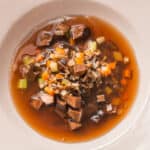
Kay
Can other Ischnoderma mushrooms be used? If so, which?
Thank you
Alan Bergo
I've only cooked resinosum. Sorry I can't speak to that.
Sally
I wanted to comment on an earlier post, originally 2017, just saw today, as looking for ways to cook Ischnoderma. In that post, you asked for other names. Of course, I like Damien Pieper's suggestion of "roast beef mushroom", as we know him and are from Iowa, but also want to shout out what my friend calls them: pancake mushrooms. Looks like a perfect edge, bubbling up, and ready to flip.
Alan Bergo
Pancake mushroom 😁
Michelle Kisliuk
I just found a lot of ISCHNODERMA RESINOSUM and will make a broth to freeze and use through the winter, and if there are some tender parts will try searing and eating. Have not yet viewed your longer video on this mushroom but I'm about to. Thank you for making your recipes and tips public, SO wonderful to have this knowledge to accompany sharp learning curve about edible mushrooms.
Jason Pfeiffer
I made this over the weekend and it is marvelous. I was wondering of the possibility of using this stock to make a French onion soup?
Alan Bergo
I think that sounds great.
Heidi Arena
Alan, did you just use the tender part of the Ischnoderma resinosum, or did you include some parts that were too tough to eat?
I agree with Will that it would be great to think in terms of stock when collecting mushrooms. Some mushrooms change flavor or get bitter once they toughen up. It would be great to have a list of mushrooms that are good for stock, even when they're tough. I always make stock from the tough parts of maitake, because it's so medicinal. I eat a lot of Berkey's Polypore when it first comes out and is still tender. There typically aren't many other mushrooms fruiting when it's in season. Next year I will try making stock with the tougher parts of it. There are lots of medicinal polypores. So now you have me wondering which ones are flavorful and not too bitter.
Alan Bergo
I was using all of the trim I could find, including the tender portions.
Will K
Great post! Every year, I have Meripilus giganteus come up in my yard, fruiting from the buried roots of a tree we had taken down a few years ago. While I have eaten the relatively tender parts when they first appear, I’m not a huge fan. Where they really shine, however, is as a base for stock or “essence”. I usually collect the bunches when they’re near peak size but not yet decaying, clean them well and break into pieces small enough to fit my stockpot. I simmer them in water to cover for a couple of hours, replenishing the water as needed. I don’t add anything else, not even salt. The resulting stock is great in soups and stews and also as the cooking liquid for grains (rice, quinoa, barley, etc.). This year, I pressure canned a batch so it wouldn’t take up so much freezer space. If there’s a downside, it’s that the broth is very dark- almost black, really- and it turns whatever you cook using it darker. I don’t think enough mushroom foragers think of stock when they’re collecting, but it definitely gives you some options when all you find are older specimens or tougher species.
Odor Gills
Hi, tossing vegetable broth into the drain just because it tasted after carrots, onion and celery (a good taste overall) maybe shows how professional cooks are used to easy tossing finished meals into the bin just like that. Observable almost everywhere. With your highly specialized and conscious way of choosing and then preparing all these fine dishes, this is pretty downturn and unexpected. At least you found you fix. Well.. but anyways nice job overall. Ahoy
Jme
Love it! I fully agree. If youve made and used veggie broth, why not save it????
Alan Bergo
Yes, I agree, there is definitely a statement in here about waste and restaurant work compared to the home kitchen. When you're at home, I think it's totally fine to save every little experiment you make and put them to good use, and I often have to do that when things are made in large batches at a restaurant, for example when a line cook messes up 4 gallons of soup and makes it a little too spicy, or with a little too much of this or that. Something of little consequence, like 4 cups of vegetable stock, I don't think much about, especially since I usually like to have prep cooks keep a couple gallons in the cooler for general use anyway. Experimentation means taking risks, success can mean a step closer to a new dish, failure can mean some vegetable scrap in the garbage. In my mind, it's a small price to pay, sometimes there is a higher purpose for ingredients to serve.